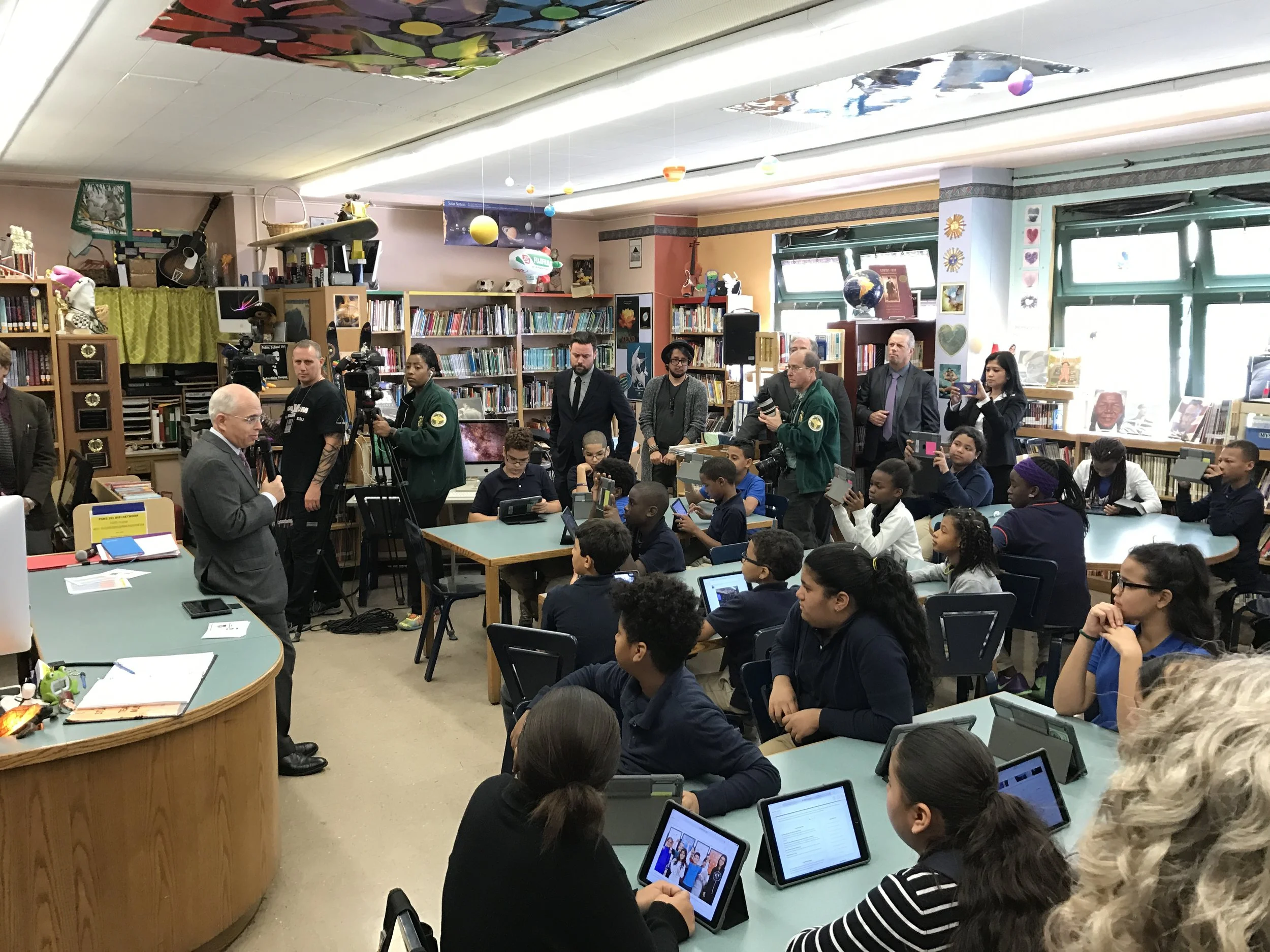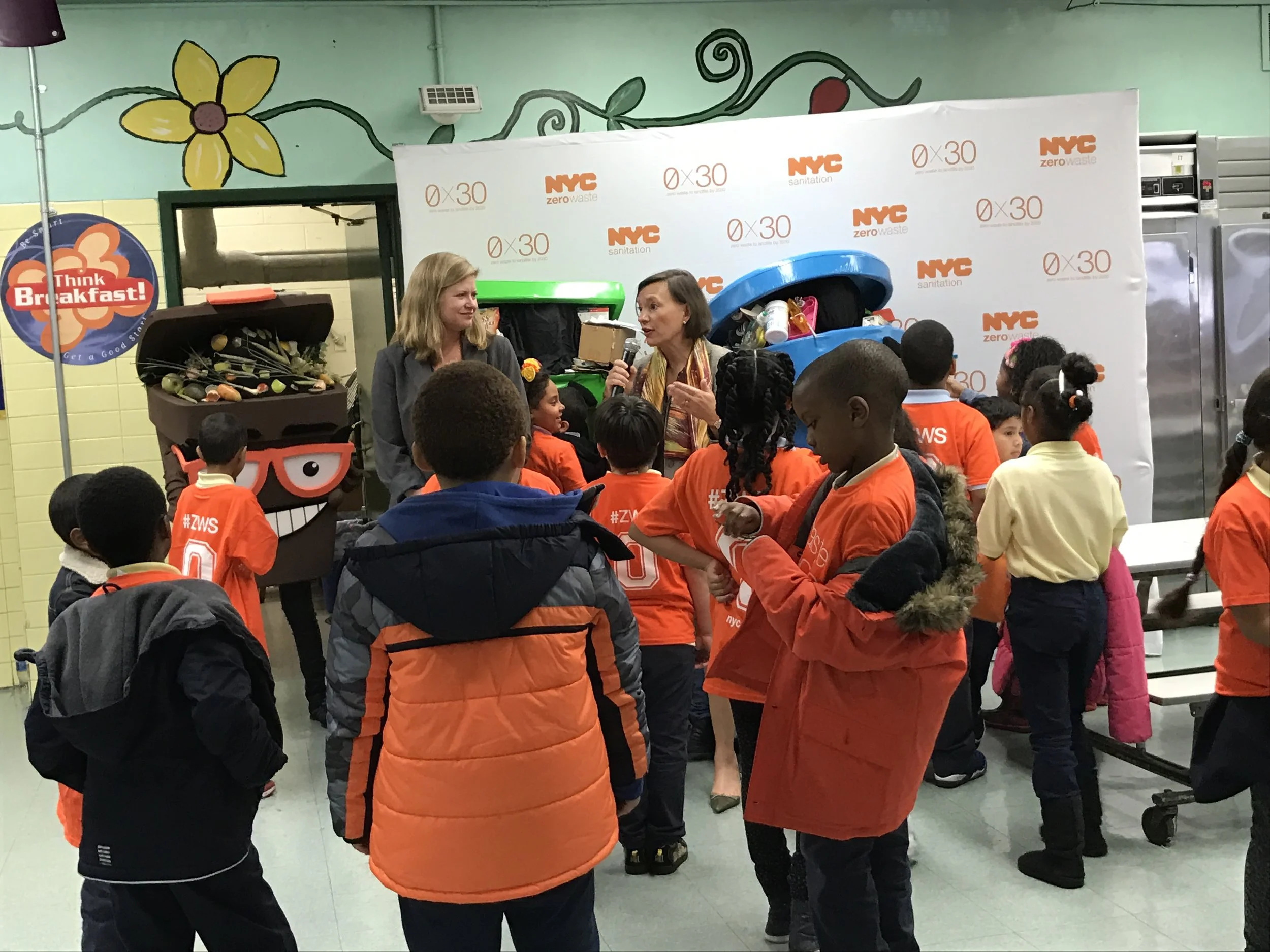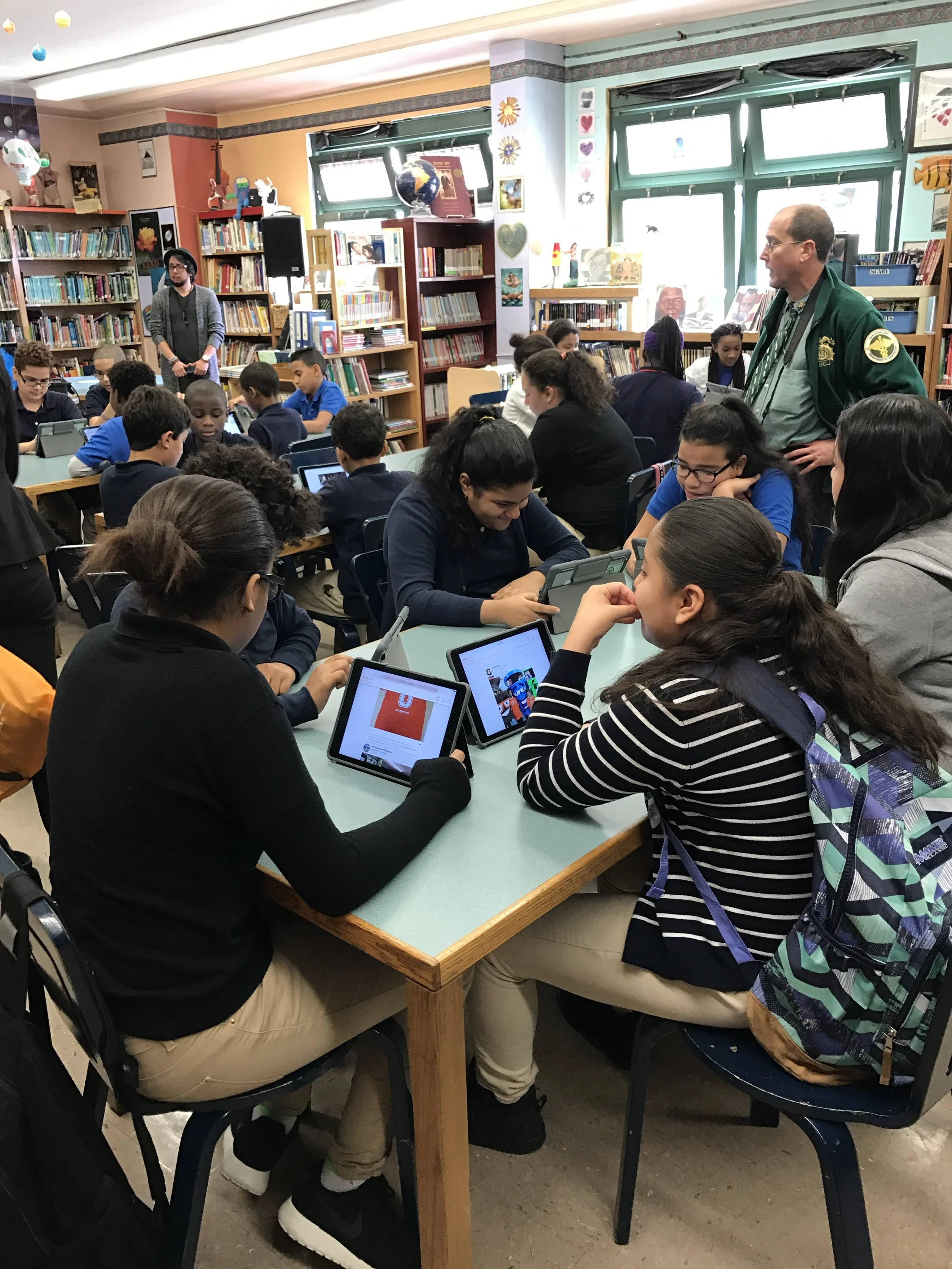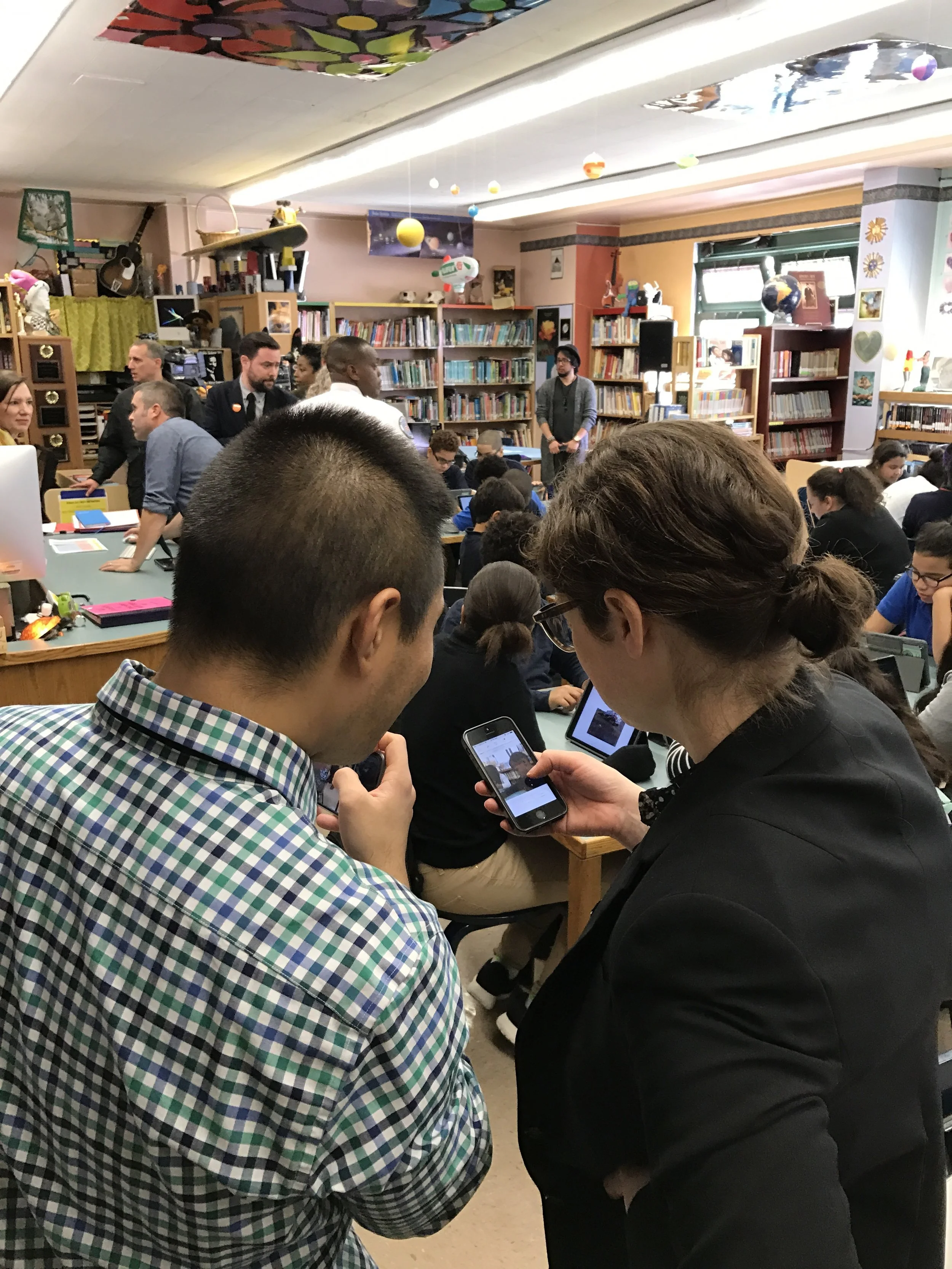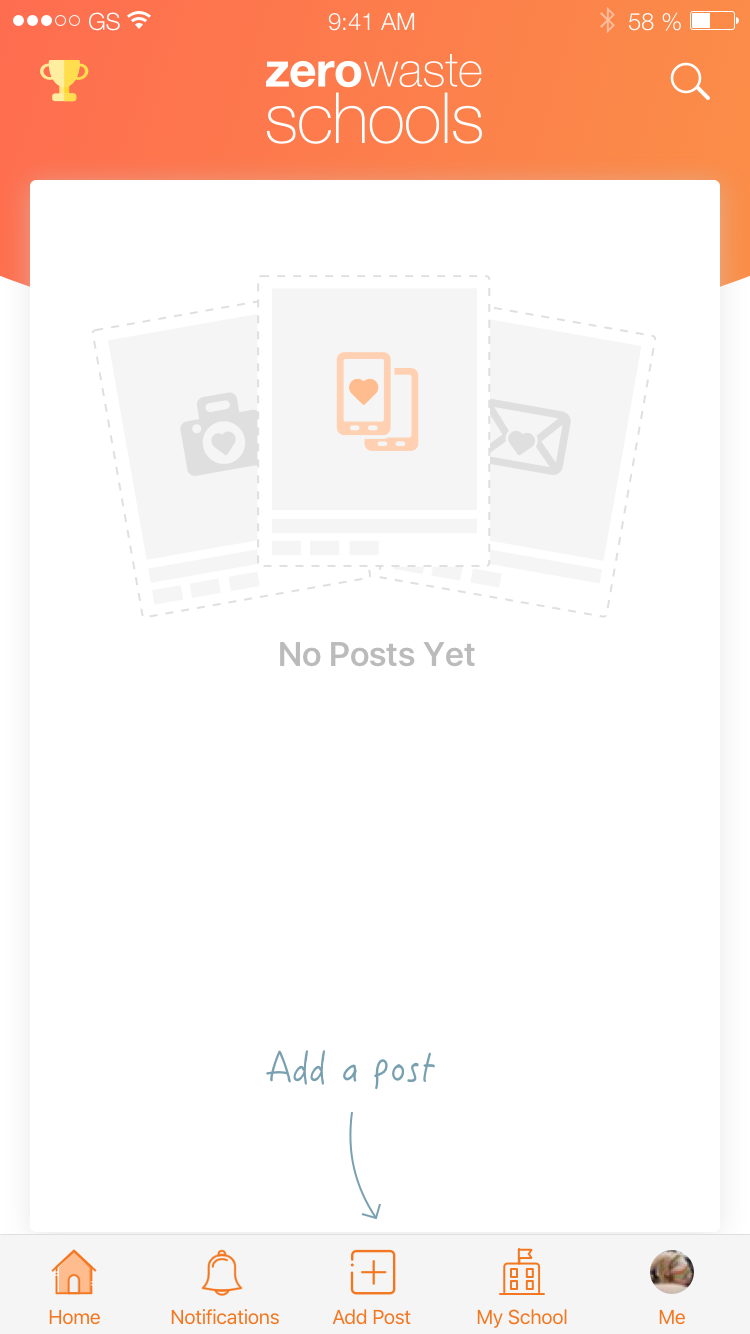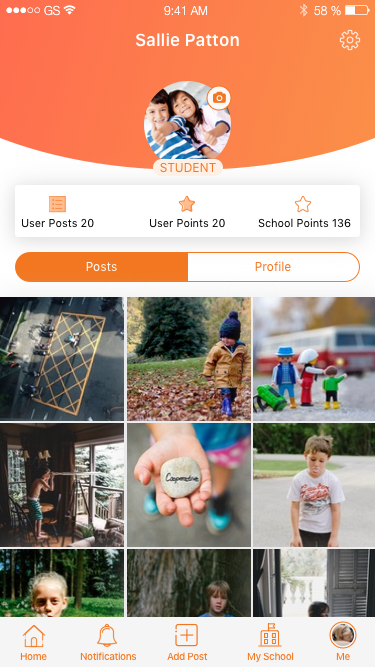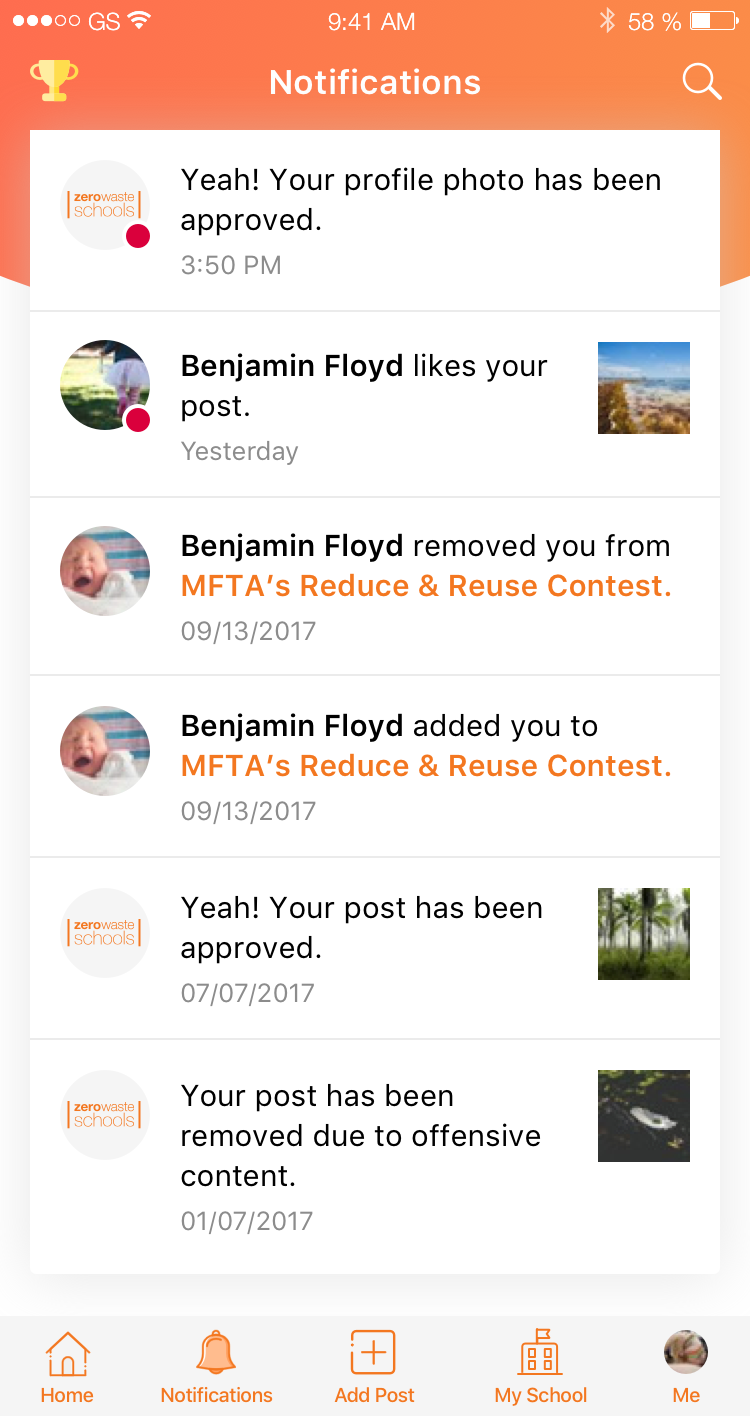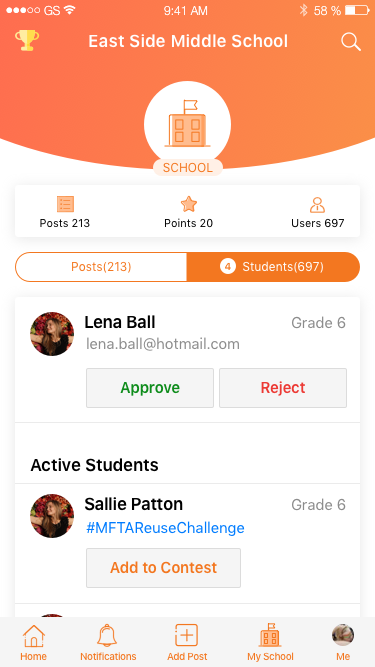Educating the Next Generation
Zero Waste Schools is a social network that connects 2,000 public schools in New York City. It encourages the students within New York City to participate in the sustainability of our planet. This platform provides teachers and students with an easier and more interesting way to get involved in various projects.
PRODUCT OVERVIEW
About
Zero Waste Schools (ZWS) allows teachers and students to learn about sustainability by posting photos and videos with hashtags of creative recycling, waste prevention, and cleanup activities. All New York City schools can participate in multiple different contests hosted by DSNY, DOE, and RCP. ZWS is an innovative program that encourages the education of students and the future of our environment.
By implementing and promoting ZWS, we are in the process of making sustainability appealing to students by acknowledging climate change. Using a social network-like platform as the basis for ZWS. We have created a controlled environment for students and teachers to post and share their recycling, reuse, and refuse efforts. So that students will be encouraged to participate in future sustainability efforts.
Agile Methodology
Zero Waste School was implemented using agile methodology and the Scrum framework. With a strong emphasis on delivering value quicker with working software early in the stages of development. This allowed for rapid iterations of the product during its development cycle.
My Cross-Functional Roles
During the course of the program’s development, I wear many hats during its phases of milestones.
As a Program Manager/Project Manager
Facilitated delivery of a program to completion on time and quality
Proactively removed impediments to ensure successful delivery
Devised the roadmap for the program
Owned and managed communication plan across the program
Communicated with the stakeholders and ensure transparency on key decisions
Built program budgets and timelines based on internal and external resources
Managed through shifting priorities to provide clear direction and input on program definition
As an Agile Partner
Facilitated sprint planning, daily stand-up meetings, reviews/demos, retrospectives, release planning meetings, and backlog refinement sessions
Championed and reinforced Agile principles and frameworks throughout the development process
Promoted a safe environment for team members to express ideas, ask questions, and voice concerns constructively.
Fostered continuous improvement by guiding the team to self-reflect, identify and improve.
Coached employees and stakeholders on Scrum fundamentals
Identified and implementing agile metrics to measure success (burn down & burn up charts)
As a Product Owner
Presented concepts, documents, and program information to key stakeholders
Acted as an internal quality control check for all phases of the development process
Provided user experience and technical development oversight
Identified, communicate, mitigate risks, assumptions, Issues, and decisions throughout the program
Defined detailed functional specifications for feature sets
Reviewed features for testing and validation during the life of the development
As a Design Strategist / UX Lead
Collaborated with cross-functional leaders to determine which research activities for the program
Lead user testing and interviews to validate designs with end-user
Guided the design process from framing the problem, synthesizing insights, and ideating creative solutions using design sprints
Conducted exercises at all stages from discovery to validation, using a variety of methods to understand customer needs and define opportunities
Product Roadmap
ZWS 1.0 Web / Admin
Responsive Web
jQuery
Restful service layers
ZWS 2.0 Web / Admin
UX Feature sets
App service layers
ZWS 2.5 Web / Admin
UX Feature sets
School ScoreCards
In the Press
During the Launch of Zero Waste School for the school year 2016-2017, Deputy Mayor Anthony Shorris, Deputy Chancellor Elizabeth Rose, and Commissioner Kathryn Garcia were at the unveiling.
Local TV crews and newspaper reporters were present at the unveiling of ZWS.
DESIGN STRATEGY
User Experience
The application spans various stakeholders from the Department of Sanitation (DSNY), Department of Education (DOE). and GrowNYC. With so many stakeholders from various positions, it was difficult to present a solution that would be pleasing to all parties involved. iterative design sprints were a determining factor in gathering valuable feedback and positioning a product that everyone can stand behind.
Target Audience
Our target audience is students within the New York City school system. Gardening the popular social networking appeal of Instagram and Snap Chat platforms for generation Z. Zero Waste School (ZWS) was created with mimicking social networking in mind. Which allows teachers and students can create image/video posts with contest hashtags.
Safe Social
The system is designed to only allow administrators, teachers, and students from the New York City school system. The approval system for accounts is self-governed by teachers and administrators. Borrowing the blockchain concept of validating student enrollment and legitimacy from multiple sources. Allows the assurance of properly authenticated users.
The close network nature of the system only allows approved users. This keeps at bay the general public, potential unwanted users, and child predators. Thus creating a haven for grades from k-12 to learn about waste, recycling, and sustainability.
User Experience Research
User Engagement
Keeping the user engaged during the sign-up process has its challenges, as it needs to appeal not only to generation Z but needs to meet the requirement for stakeholder approvals. The quicker simplified flow of registration and self-governed account approvals that stemmed from the iterative design sprints gained acceptance during testing phases of the UX design phase.
Instant Gratification
The posting process mimics common social networking platforms to gain the user’s confidence, this allows for instant Gratification that will engage the user in continuing to interact with the platform more often.
User Rewards
The platform is gear towards aggregating users’ submissions for a contest like submission and rewards.
Visual Designs
User Interface
Mobile User Interface
Enterprise Architecture
Technical Designs
ZWS uses the client-side 3 tier architecture in which the logic, data access, storage, and user interface are developed and maintained as different modules.
Service layers
Web services are passed via JSON objects, this web application was the first complete end-to-end data-driven application. With the rapid iterative design & development cycle, using the Scrum framework was key in delivering a successful product.
Image Processing
One of the major technical hurdles the team faced was Image compression, processing, and storage of images. The image compression is achieved during the upload process and it is stored on our servers. The processing of images took quite some time to figure out the proper logic to work properly as images will be taken from different devices based on the front or rear cameras. At the time of creation, we could not find a working world example, like Instagram, Snapchat or other similar platforms would not let you upload a photo from the web.
CONCLUSION
OBSERVATIONS
Zero Waste Schools (ZWS) is a learning tool for future generations of New York City residents. The cross-functional team applied user experience design methodology during all phases of the product to garner stakeholder confidence and positive user feedback. The team was eagerly tackling service-oriented architecture and creating the backbone of services for other projects to come. The team was highly efficient and effective in the completion and delivery of the program.
RESULTS
All in total 6 different User Experiences are delivered, that spans over 3 products that include Web, iOS, and Android
Zero Waste Schools 2.7
Dynamic Web Application, that delivers on-demand client-side consumption of services. For Department of Education.
Desktop / Tablet / Mobile Views
Zero Waste Schools Mobile Applications
Native iOS and Android Application, that delivers on-demand client-side consumption of services. For Department of Education.
iOS / Android



